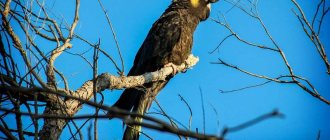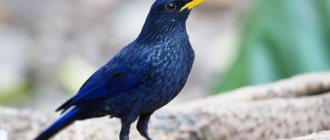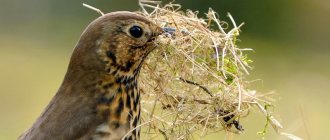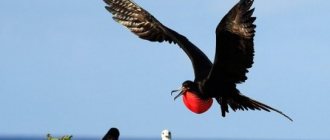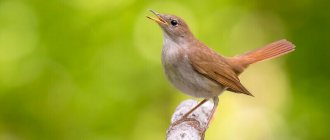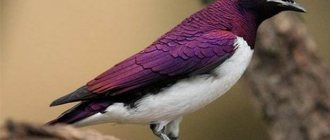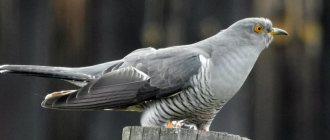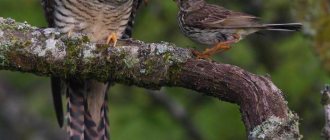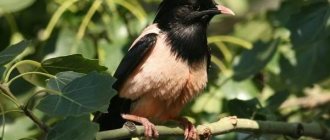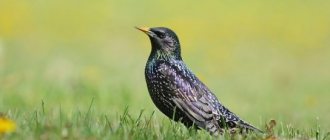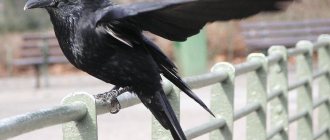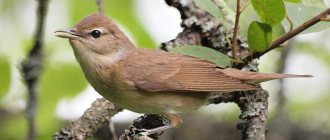Have you ever wondered what birds are called songbirds? Judging by the name of those who can sing. But it turned out that everything was not so simple. But let's not keep the intrigue. Songbirds are a general name for birds that can make pleasant sounds. In total there are about 5,000 species, 4 thousand of which belong to the order Passeriformes.
Songbirds in Russia number about three hundred species from 28 families. The smallest is the yellow-headed kinglet, weighing 5-6g, and the largest is the raven, weighing up to one and a half kg. Surprised? Or do you think its sounds are not melodic? So let's figure out who and why ornithologists call warblers.
How are sounds created?
Unlike ordinary birds, songbirds have a syrinx - a complex structure of the lower larynx, which has up to seven pairs of muscles. This organ is located in the chest, at the lower end of the trachea, closer to the heart. The syrinx contains a separate sound source in each bronchus. Vocalization usually occurs during expiration by moving the medial and lateral folds at the cranial end of the bronchus. The walls are pads of loose connective tissue, which, when air flow is introduced, cause vibrations that generate sound. Each pair of muscles is controlled by the brain, which allows birds to control the vocal apparatus.
The majority of songbirds are small or medium in size, modest in color and have thick plumage. The beak is devoid of wax. In insectivorous representatives, it is usually thin and curved. In granivores it is conical and strong.
The first birds in the Moscow region: how to distinguish who is singing
Material prepared by Mytishchi IA>>
The first feathered guests arrive in the Moscow region in late February - early March. Their voices outside the window create a spring mood. Birds are studied and counted precisely by their voices, because they are often difficult to distinguish visually on a tree. Ornithologists conduct counts in the spring, on April 1 - International Bird Day.
A correspondent of the Mytishchi news agency learned from the founder of the Museum of Nature Conservation in Mytishchi, associate professor of the Moscow State Forest University Galina Balyasova, how to distinguish the voices of birds.
Instagram timeline: early spring through the eyes of residents of the Moscow region>>
Where does spring begin?
Blue tit. Photo: flickr.com, Philippe Rouzet
As soon as the February sun begins to warm up, the circling of tits is immediately heard. They ring especially, like spring. This bird singing is associated with the mating season. It is then that we hear the most beautiful songs, amazing trills. Now this is already noticeable in parks and city squares, says Galina Balyasova.
“Even crows caw in the spring in a very special way. Jays and magpies chatter with love. This is accompanied by flights and courtship,” notes the ornithologist.
According to her, the birds that live in the Moscow region belong mainly to the passerine order and are considered songbirds, including the jackdaw and crow.
At the same time, many birds remain in cities for the winter. All year round in the Moscow region you can find sparrows, pigeons, crows, magpies, jackdaws, woodpeckers, and wrens. Tits also live with us all year round, but their behavior changes noticeably in the spring. It is the bright “ringing” of titmouses that first notifies that spring has come, the expert notes.
“Many birds of this species live in the Moscow region. This is the great tit, the chickadee, and the Muscovy tit – the smallest, but at the same time a very useful bird. There are also grenadier or tufted tits, as well as white tits,” the ornithologist specifies.
The blue tit is amazingly beautiful; it can be distinguished by its bluish tint of plumage. She begins singing regularly in March. This bird, as a fairly ancient species of tit, has preserved a large number of sound forms. It can be distinguished by its bright whistling tone: “ti-ti-tititi...” or “tsi-tsi-tsitsitsi.”
Wagtail. Photo: flickr.com, Jean-Jacques Boujot
Traditionally, rooks are the first to arrive in the spring. They, like all corvids, croak. Following them, after the opening of the rivers, which may occur in mid-April, wagtails will fly to the Moscow region.
These birds have already become completely urban; they can often be seen near fountains, rivers, and in parks. In addition to the beautiful bright coloring that is familiar to the eye, in the spring they also sing. Their singing, which is often unorganized chirping, fills the entire space of the parks.
Birder Praskovya from the Moscow region: “Quail is an amazing bird”>>
Who's flying over?
Bullfinch. Photo: flickr.com, Natural England
In addition, the migration of finches, redpolls, greenfinches, and goldfinches passes through the Moscow region.
In the spring, residents of the Moscow region are pleased with their appearance and the busty bullfinch, which looks like a bunch of ripe rowan berries, and also sings! This small bird can be recognized by its characteristic singing: “ju-ju-ju”. Even while having breakfast, he does not stop singing. Bullfinches are a rare exception among birds - both males and females sing. By the way, before, goldfinches, siskins and bullfinches often lived at home in cages and were kept in pairs. They delighted their owners with their amazing trills. Currently, catching these birds is prohibited.
Waxwings, despite the fact that they nest in the north, flying through the Moscow region, gather in flocks and whistle melodiously. In recent years, these birds are increasingly appearing in cities. They fly from tree to tree, causing surprise and delight among the townspeople with the perfection of their outfit and delicate silver trill.
Waxwing. Photo: flickr.com, Pam Link
Meetings with flocks of waxwings outside the city, in still snow-covered forests and gardens, are also unique. Here they often appear together with blackbirds and bullfinches. Blackbirds crackle softly, red-breasted bullfinches whistle their sad flutes, waxwings ring their silver bells.
The bulk of birds arrive in the Moscow region in April, when the temperature crosses the threshold of plus 6 degrees, the insect season begins - and the birds have more food, explains the ornithologist.
The nightingales of Moscow and the Moscow region changed their songs due to city noise>>
City bird
Nightingale. Photo: flickr.com, Edwyn Anderton
Very soon the nightingale from the thrush family will begin to produce its trills. This urbophile bird feels great in the city. The main thing for her is that there be bushes, and since there is plenty of space in our parks, the nightingale lives comfortably, the expert notes. He also has enough food - insect pests.
It is best to listen to the nightingale at night, when no extraneous sounds interfere. After the initiative (several quiet, clucking, whistling, and less often rattling sounds), the nightingale emits strong, clear whistles. The nightingales of the Moscow region are characterized by the whistle “willow-willow”.
A bird listed in the Red Book was found in the capital's Izmailovo Park>>
Chirps or tweets?
Nightingale. Photo: flickr.com, Tatiana Bulyonkova
Warbler, warbler, starling - there are countless songbirds. For thousands of years, people have tried to figure out what birds are singing about. For ornithologists they still remain mysterious creatures; scientists observe them, study their habits and characteristics. Birds sing according to a specific biological clock. First, some begin to sing, others join in, then others chirp, and others chirp.
The avifauna of the region is very rich. Dozens of different species of birds live in the Moscow region - it is impossible to imagine courtyards, parks, and public gardens without them.
The Mytishchi Museum of Nature Conservation contains a systematic scientific collection of birds - more than 190 exhibits in total. They are presented by orders and families. Galina Balyasova began collecting this collection in 1967, when she became a teacher at the Moscow State Forestry University.
The ornithologist calls on residents of the Moscow region to take care of birds.
“There are a lot of birds in the Moscow region, because the number of pests in parks and gardens has increased. However, during food shortages, which often occur not only in winter, but also during dry periods, birds need to be fed and provided with access to water. And then you and I will again and again enjoy the bubbly singing, chirping, strumming and chirping of small winged creatures,” concluded Balyasova.
Yulia Alabina
Why do birds sing?
As a rule, only the males sing in most warblers. Vocalization includes a wide range of calls to facilitate communication. The singing of males during the mating season is considered the most beautiful and melodious. It is believed that by doing so he signals his readiness to mate with a female and warns rivals that the lady is occupied in this territory. Alternatively, scientists suggest that males use singing to keep females interested.
There are separate signals notifying other males of an invasion of foreign territory. Often singing is replaced by physical combat, in which an unwanted opponent is simply pushed out.
In some bird species, both partners sing; this applies to those who have the same color or create a pair for life. Presumably, this strengthens their connection and communicates with chicks and other individuals. Most meadow species have “flight” songs.
Singing birds from distant lands
Birds that sing are everywhere, even in the tropics of Africa or South America. The hotter the climate, the more colorful their appearance, as can be seen from numerous photos. Singing birds are also not uncommon in these parts. But researchers have proven one interesting fact: birds from tropical latitudes sing in a lower voice than their counterparts from temperate climates with higher frequencies. This is explained by the fact that in the tropics there is very dense vegetation, and there are much more sounds, since numerous insects of hot impenetrable forests also create chants. Therefore, high-frequency sounds are simply muffled and have poorer transmission due to obstacles in the form of thick grass and trees.
Birds, evolutionarily, have only one way left to be heard by their fellows - to communicate at low frequencies, which are able to travel much further through vegetation and compete with the sounds of insects.
Voices of birds
Although songbirds include the best singers, such as the nightingale and thrush, some have harsh, off-putting voices or no sounds at all. The fact is that different species of birds are characterized by different volumes and tonality of their voices, which each species combines into a melody unique to it. Some birds are limited to a few notes, while others have control over entire octaves. Birds whose singing consists of a small set of sounds, for example sparrows, raised even in captivity, upon reaching a certain age, begin to sing as expected. More gifted singers, such as nightingales, certainly have to learn this art from their older brothers.
An interesting fact has been established, which suggests that the singing of birds that are similar in appearance is sharply different, but that of birds that are different in appearance may be similar. This feature protects birds during mating games from mating with representatives of another species.
Reasons for singing
Why do birds sing and make sounds? Of course, this sounds beautiful, delighting our human ears, but the reasons are due to purely biological factors. Below are just the main ones.
- Designation of your territory. Yes, it also happens to birds that they need to highlight and defend their place, and this can be done by singing. So, one might say, they protect their nests, young and places with food. After all, everyone has probably noticed how little birds sing, quickly jumping from branch to branch? This is how they designate their branch (or several trees). They can sing like this all day long.
- Another important reason is that the male attracts the attention of the female. He has many competitors, so it is important to try to win the attention of his beloved: with his singing and also color, bird dances and courtship.
- Sounds are also used for communication. To be specific, with calling signals one bird can call another, or the cubs can call their parents. This is often used in packs, so as not to fight back, and also in forests, where it is difficult to see your own, but can be heard by sounds. As a rule, calling signals differ slightly from singing.
How to identify a bird by its song using your phone
I like smartphone apps that force me to break my routine and discover something new. This is exactly what happened with the BirdNET application: Easy recognition of bird sounds. It will tell you which birds have gathered in your yard, forest or park. Amazing discoveries await you, as more than a hundred species of birds live around!
Canary
The bright songbirds received their specific name in honor of their historical homeland - the Canary Islands. Over time, man domesticated canaries and they became beloved pets, also filling the house with beautiful singing.
They belong to the genus of finches, and the first canaries born in captivity were born in the middle of the 17th century. Spanish sailors brought them to Europe on their ships. Favorite birds of Spanish and English monarchs.
Their abilities are truly unique, as canaries can learn the notes of any song if they deliberately teach this song to them. The only period of life when they do not sing is the season of shedding their feathers. And this happens every year in the summer months. TopCafe wishes you to hear the song of this amazing bird at least once.
10
Kamyshovka
Another nocturnal songbird is the garden warbler. The bird is one of the last to return, so it begins to sing only towards the end of May.
She performs melodies for hours without repeating her repertoire. The trills are energetic, cheerful and do not get boring. The warbler hoots, whistles, and makes cracking sounds. Sometimes the bird can repeat couplets several times.
The warbler is smaller than a nightingale and weighs no more than 15 g. Therefore, its songs are quieter and more gentle. It's nice to listen to them.
Warblers nest in grass and reeds and love areas near swamps and floodplains of lakes. Birds start trilling in rose hips and abandoned gardens.
song thrush
The bird, which lives in the forests of Europe, Asia Minor and some regions of North Africa, will amaze anyone with its excellent singing. The thrush's song is leisurely, measured, with a varied set of tones.
The song can imitate the singing of other birds, and some parts of the singing are repeated 2-4 times. They begin to sing at the beginning of the mating season, and the singing continues until the end of the nesting period. They like to settle near cities and villages, and therefore it is easy to hear its beautiful singing.
Collective birds gather on the treetops and begin to sing their songs in chorus. It is noteworthy that they sing in unison and without cacophony.
7
House Sparrow
Small and beautiful birds are closely related to people. They have settled almost all over the planet and live in rural and urban areas. Their song contains different types of notes, and they can make sounds in different keys.
There are species of birds in which only males can sing beautifully, but in sparrows both sexes can make sounds. Thus, these social birds communicate with each other. But female house sparrows use such notes very rarely, when the male uses different notes to establish contact and attract a female.
Female house sparrows make a soft chirping sound when a male bird comes into their field of vision. House sparrows also aggressively defend their nest, making loud alarm calls when doing so.
5
Connection with other words
Words ending with -singing:
- longsuffering
- boiling
- impatience
- chant
- creaking
- sniffling
- patience
- Dormition
- snoring
- wheezing
- hiss
- dullness
- stupefaction
Hypo-hyperonymic relationships
expression self-expression singing chant
What is singing like (adjectives)?
Selection of adjectives for words based on the Russian language.
choral bird quiet mournful monotonous church loud discordant quiet melodic harmonious lingering gentle female distant angelic cheerful distant sonorous joyful drunk audible solemn false polyphonic thin muffled strange hoarse beautiful piercing sad sweet nightingale wonderful rhythmic throaty wondrous plaintive sweet divine monastic magical children's evening prayer funeral nasal creepy beautiful wild sudden funeral own cock mosquito solo sweet-voiced low sad dreary viscous dull ritual
What can singing do? What can you do with singing (verbs)?
Selection of verbs for words based on the Russian language.
stop silence break off continue become subside heard come end end interrupt change cease be accompanied resume become heard remind cease appear resound end intensify rush move make seem turn approach spread silent help cause reach irritate reach interrupt stop be heard interfere continue last accompany drown out increase produce fill proceed induce wake up rush weaken penetrate fill go subside serve act want to make appear move freeze resound
Associations to the word singing
word guitar accompaniment church street Corinth temple window choir stage accompaniment ear forest language school feeling wall unison shore Paris night church sky bath head fire house honor throat choir piano sound water beat moment branch garden guide Italy instant help money minute wind Moscow July hall city current side Latin island opera half-word crying theme recitation tear passage phonogram heart shower father's day
Synonyms for singing
bleating squeal squeal voice art knee knee concert scream moo squeak tribe neigh roulada growl trill noise roar squeal
Hypernyms for singing
- self-expression
- art music
Hyponyms for singing
- chanting chorale caroling
Scope of use of the word singing
General vocabulary Music Religion Church term Medicine
